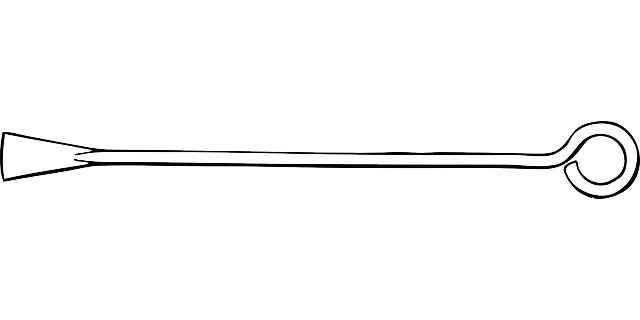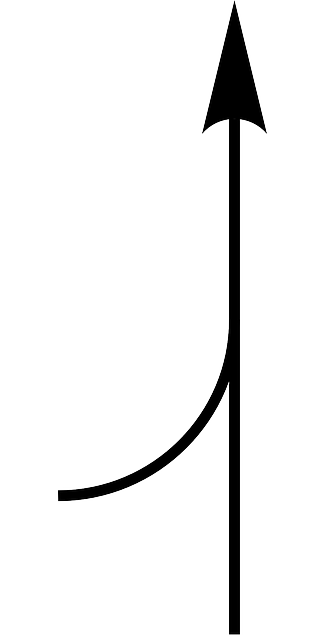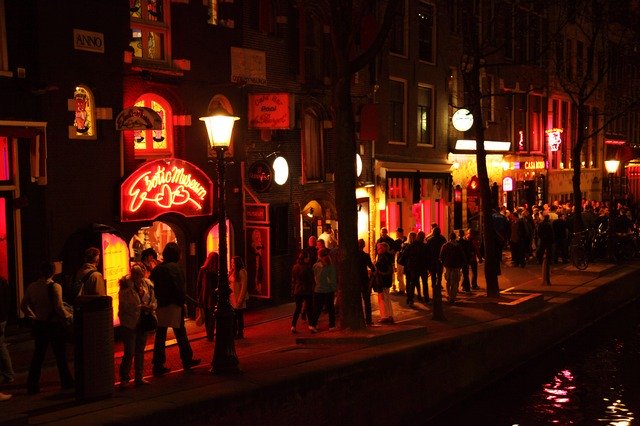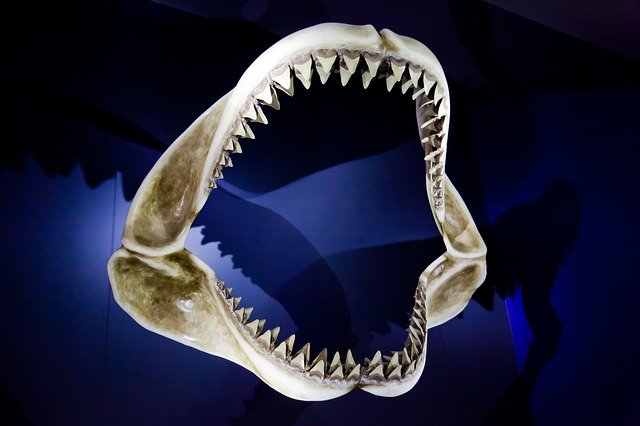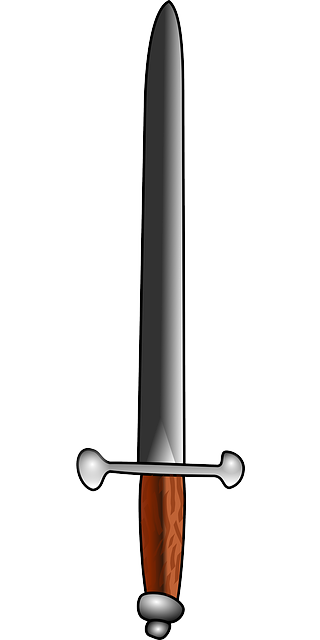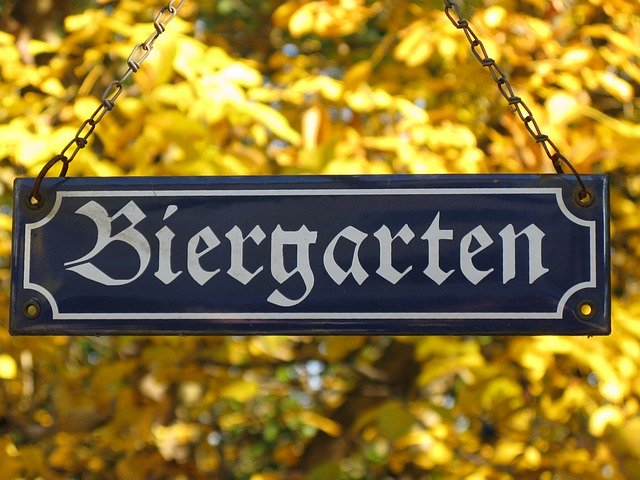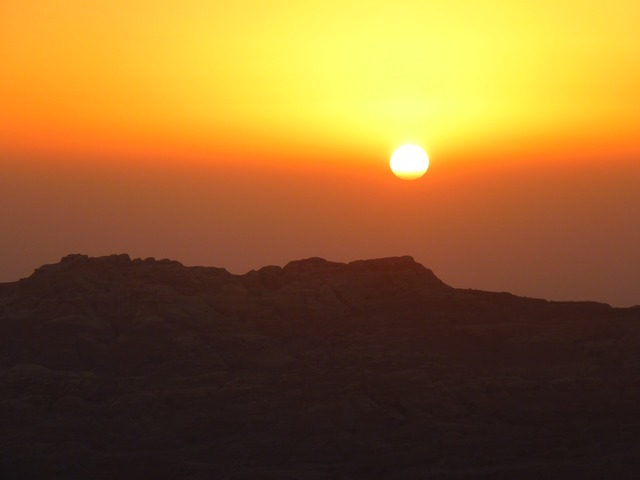المحطة الفضائية الدولية
| المحطة الفضائية الدولية في 23 مايو2010 كما بدت من مكوك فضاء المغادِرة أثناء STS-132 | ||
| ISS Insignia | ||
| Station statistics | ||
|---|---|---|
| NSSDC ID: | 1998-067A | |
| Call sign: | ألفا | |
| Crew: | 6 | |
| Launch: | 1998–2011 | |
| Launch pad: |
KSC LC-39, Baikonur LC-1/5 & LC-81/23 |
|
| Mass: | 303,663 kg | |
| Length: | 73 م من هارموني إلى زڤزدا |
|
| Width: | 108.5 م بطول الجملون، مع تمديد مصفوفات الخلايا الشمسية |
|
| Living volume: | 358 م³ | |
| Atmospheric pressure: | 101.3 kPa | |
| Perigee: | 347 كم ازدياد (19 أبريل 2009) |
|
| Apogee: | 358 كم ازدياد (19 أبريل 2009) |
|
| Orbit inclination: | 51.6419 degrees |
|
| Average speed: | 27,743.8 km/h (7706.6 م/ث) |
|
| Orbital period: | c.91 minutes | |
| Days in orbit: | 7867 (4 يونيو) | |
| Days occupied: | 7156 (4 يونيو) | |
| Number of orbits: | c.124158 (4 يونيو) | |
| Orbital decay: | 2 km/month | |
| Statistics as of 28 March 2009[] (unless noted otherwise). | ||
| References: | ||
| Configuration | ||
| Station elements اعتبارا من مارس 2009[تحديث] (exploded view). | ||
| محطة الفضاء الدولية International Space Station | ||
محطة الفضاء الدولية (ISS) ، مشروع تقوم ببنائه خمس وكالات فضاء هي: وكالة الفضاء الأمريكية ناسا، وكالة الفضاء الفدرالية الروسية (روس كوزموس RossKosmos)، وكالة الفضاء الأوروبية ووكالة الفضاء اليابانية (جاكسا JAXA)، ووكالة الفضاء الكندية ليكون منتهى الرحلات الفضائية المأهولة. وكالة الفضاء البرازيلية تساهم في المشروع من خلال عقد مع ناسا، ووكالة الفضاء الإيطالية تساهم في المشروع في إطار وكالة الفضاء الأوروبية (التي هي عضوفيها).
والمحطة تعبير عن قمر صناعي أرضي مأهول، كبير الحجم، تعمل 15 دولة على تشييده في الفضاء. وقد أطلق أول جزء من المحطة في عام 1998م. وسوف تشتمل المحطة الفضائية العالمية على ثمانية أجزاء أسطوانية ضخمة تسمى المركبات الانفصالية. وسيتم إطلاق جميع منها على نحومنفصل من الأرض، ويقوم رواد الفضاء والملاحون بتجميع الأجزاء في الفضاء.
ستقوم ثمانية ألواح شمسية بتزويد المحطة بأكثر من 100 كيلوواط من القدرة الكهربائية، وهي كمية من القدرة الكهربائية تفوق بعدة مرات القدرة التي زودت بها أية محطة فضائية سابقة. وسوف هجرب الألواح على هيكل معدني طوله 109 أمتار. كما سيحمل الهيكل أيضًا المشعات التي يفترض أن تبث طاقة الحرارة المهدرة في الفضاء، بالإضافة إلى مسار لذراع آلية متحركة.
تدور المحطة حول الأرض على ازدياد 420كم تقريبًا. ويمتد المدار من خط العرض 52° شمالاً إلى خط العرض 52° جنوبًا.
وحسب الخطط المتفق عليها في عام 1994م، ستوفر الولايات المتحدة الأمريكية وروسيا معظم المركبات الانفصالية والمعدات الأخرى. وستقوم كندا بإنتاج الذراع الآلية. وتضم قائمة المساهمين الآخرين اليابان والدول الإحدى عشر الأعضاء في وكالة الفضاء الأوروبية (إسا) وهي بلجيكا والدنمارك وفرنسا وألمانيا وإيطاليا وهولندا والنرويج وأسبانيا والسويد وسويسرا والمملكة المتحدة. كما سقطت البرازيل اتفاقية منفصلة مع الولايات المتحدة الأمريكية لتوفير بعض المعدات. وفي اللقاء، سيكون للبرازيل الحق في استخدام المعدات الأمريكية، بالإضافة إلى الإذن بإرسال رائد فضاء برازيلي إلى المحطة.
سيحتاج إكمال بناء المحطة الفضائية العالمية إلى أكثر من ثمانين رحلة طيران. وسينقل معظم أفراد الطاقم والمؤن إلى المحطة، على متن مكوكات الفضاء الأمريكية أوالصواريخ الروسية، من نوع سيوز وبروتون. وتنوي جميع من وكالة الفضاء الأوروبية واليابان، تطوير مركبات تموين يتم إطلاقها بوساطة الصاروخ الأوروبي آريان -5 والصواريخ اليابانية المعززة أتش -2.
المهام
سيقوم أفراد طاقم المحطة الفضائية بقياس تأثيرات الأحوال الفضائية مثل انعدام الوزن الظاهري، على بعض العينات الأحيائية (البيولوجية)، بما في ذلك أنفسهم. كما سيقومون أيضًا بفحص تأثيرات الفضاء على إنتاج بعض المواد مثل الرقائق شبه الموصلة وبلورات الزجاج. والرقائق شبه الموصلة هي المواد الأساسية في تصنيع شرائح الحاسوب.
ستكون المحطة الفضائية بمثابة مرصد ومختبر وورشة. وستفحص الأجهزة الموجودة فيها بعض المعالم المفصلة على سطح الأرض وفي الغلاف الجوي، كما ستقوم برصد الشمس والأجرام الفلكية الأخرى دونما تأثر بالتشويش الحاجب للغلاف الجوي.
إن الفائدة الرئيسية من إنشاء محطة فضائية هوأننا سنحتاج إلى نقل جميع المعدات إلى الفضاء مرة واحدة فقط. كما حتى المحطة يمكن استخدامها مرة تلوأخرى من قبل رواد الفضاء والملاحين الزائرين. وسيكون بمقدور الفهماء على الأرض تحليل نتائج التجارب وتعديل أبحاث المتابعة في الوقت المناسب بطريقة أكثر دقة مما كان عليه الوضع من قبل. لقد صممت المحطة لتعمل لمدة عشر سنوات على الأقل، ولكنها يمكن حتى تستمر في العمل لعقود إذا تم إصلاح واستبدال الأجزاء عند تعرضها للبلي أوالتلف.
البحث الفهمي
نبذة تاريخية
ستكون المحطة الفضائية العالمية هي تاسع محطة فضائية مأهولة تدور حول الأرض. وقد أطلقت المحطات الأولى، المكونة من ستة نماذج من محطة ساليوت السوفييتية ومحطة سكايلاب الأمريكية، خلال فترة السبعينيات من القرن العشرين. وقد توفي أفراد طاقم المحطة الروسية ساليوت 1 أثناء عودتهم للأرض، واستطاع أفراد طاقم المحطة الأمريكية سكايلاب التغلب على مشاكل رئيسية متعلقة بالمعدات.
وفي عام 1986م، بدأ السوفييت في تشغيل محطة مير الفضائية، وهي أول محطة تستخدم تصميم المركبات الانفصالية. واستطاعوا تطوير نظام نقل اقتصادي يمكن الاعتماد عليه، للوصول للمحطة، مما مكنهم من نقل المؤن والمعدات والبدلاء لأفراد الطاقم. وفي أعقاب انهيار الاتحاد السوفييتي في عام 1991م، تولت روسيا مهمة تشغيل محطة مير. وقام الملاحون ورواد الفضاء الروس بالسير في الفضاء لإصلاح الأعطال الكبيرة التي تعرضت لها جميع من المحطة ومركبات النقل الفضائية. وفي 23 مارس 2001م، حطمت روسيا المحطة الفضائية مير، رغم قدرتها على العمل الفضائي، بسبب نقص ميزانية نفقاتها.
لقد خططت جميع من روسيا والولايات المتحدة الأمريكية لبناء محطات فضائية جديدة خلال عقد التسعينيات. فروسيا كانت تنوي بناء محطة تسمى مير 2 لتحل محل محطة مير، وخططت الولايات المتحدة الأمريكية لبناء محطة تسمى فريدم (الحرية). وفي عام 1993م، ونتيجة لبعض الصعوبات المتعلقة بالتمويل، اتفقت الدولتان على إنشاء محطة مشهجرة يطلق عليها اسم المحطة الفضائية العالمية. فهناك الكثير من المركبات الانفصالية الروسية الصنع التي تضم المركبات المختصة بالدفع ومساندة الحياة، ستحل محل الأجزاء الموجودة في التصميم الأمريكي. وفي يناير 1998م، سقطت الاتفاقية النهائية بوساطة ممثلي الدول الخمس عشرة المعنية.
قامت مكوكات الفضاء الأمريكية برحلات إلى مير خلال الفترة من 1995م إلى 1998م، بغرض الإعداد للمشروع المشهجر. كما عمل رواد الفضاء الأمريكيون على متن المحطة الروسية في مجال البحث لفترات امتدت حتى ستة شهور.
لقد حدثت تأخيرات كبيرة بشأن تشييد المحطة الفضائية العالمية بسبب التخفيضات في الاعتمادات المالية من قبل الحكومة الروسية. وعلى الرغم من ذلك، فقد جرت أول عمليات الاطلاق في أواخر عام 1998م. وكانت أولى المركبات الانفصالية للمحطة، روسية الصنع وبتمويل أمريكي، أطلق عليها اسم زاريا، وأطلقت في 20 نوفمبر عام 1998م. تحتوي زاريا على أنظمة الدفع والتوجيه والكهرباء والتحكم في الحرارة، الخاصة بها. أما المركبة الانفصالية الثانية المعروفة باسم يونيتي (الوحدة) فقد شيدت بوساطة الولايات المتحدة الأمريكية. حملت يونيتي لتوضع في مدارها حول الأرض، بوساطة مكوك الفضاء أنديفور في ثلاثة ديسمبر 1998م، وتم توصيلها مع زاريا في ذلك الوقت. زودت يونيتي بست فتحات، تم توصيل إحداها بزاريا، وستكون الفتحات الأخرى بمثابة وصلات لربط المركبات الانفصالية الأخرى.
محطة فضاء
التجميع والهجريب
تجميع محطة الفضاء الدولية, هوهدف ومسعى رئيسى للهندسة الفضائية , بدأ في نوفمبر 1998. نطقب:حيث of المحطة ما يقرب من 81 ٪ إكتملت . الجزء الأول من محطة الفضاء الدولية ، زاريا، أطلق الى المدار في 20 تشرين الثاني / نوفمبر 1998 على الصاروخ الروسي بروتون ، أعقبتها بعد اسبوعين من اول 'عقدة 'من ثلاث وحدات, ، على متن صاروخ اس 88. هذا وأوضح - 2 وحدة من المحطة الفضائية الدولية الأساسية لا تزال من دون طيار لمدة واحدة نصف سنة حتى المركبة الروسية ' Zvezda أضيفت في تموز / يوليو2000 ،وسمح ذلك بطاقم مكون من ثلاثة أشخاص ,كى يشغلوا المحطة الفضائية الدولية بصفة مستمرة . أول طاقم مقيم ، Expedition 1 ، وقد أوفد في وقت لاحق من ذلك العام في تشرين الثاني / نوفمبر,2000 . الهيكل المتكامل تروس , Z1 and عام 2000 أيضا وصول قسمين من المحطة تروس تضم محطة الأجنة, مع قسم الإتصالات والقسم الإرشادى (التمديدات الكهربية ) , ( على متن z1), , والطاقة من خلال زوج من الأجنحة الشمسية المصفوفة , مثبتة فوق P6 حزم. على مدى السنتين المقبلتين المحطة مستمرة في التوسع مع صاروخ سويوز delivering the docking compartment. Space Shuttles Discovery, Atlantis, and Endeavour delivered the laboratory and airlock to orbit, in addition to the station's robot arm Canadarm2, and several more segments of the truss structure.
pressurised modules
| Module | Assembly mission | يوم الإطلاق | نظام الإطلاق | الدولة | Isolated View | Station View |
|---|---|---|---|---|---|---|
| Zarya (FGB) | 1A/R | 20 November 1998 | Proton-K | Russia (Builder) US (Financier) |
||
| Provided electrical power, storage, propulsion, and guidance during initial assembly. Now serves as a storage module, both inside the pressurised section and in the externally mounted fuel tanks. | ||||||
| (Node 1) | 2A | 4 December 1998 | Space Shuttle , STS-88 | US | ||
| The first 'node' module, connecting the American section of the station to the Russian section (via PMA-1), and providing berthing locations for the Z1 truss, Quest airlock, Destiny laboratory and Tranquility. | ||||||
| (Service Module) | 1R | 12 July 2000 | Proton-K | Russia | ||
| The station's service module, which provides the main living quarters for resident crews, environmental systems and attitude and orbit control. It also provides docking locations for Soyuz spacecraft, Progress spacecraft and the Automated Transfer Vehicle. The addition of the module rendered the ISS permanently habitable for the first time. | ||||||
| (US Laboratory) | 5A | 7 February 2001 | Space Shuttle , STS-98 | US | ||
| The primary research facility for US payloads aboard the ISS. Destiny provides a research facility for general experiments with space for 24 International Standard Payload Racks, some of which are used for environmental systems and living equipment. Destiny features a 20-بوصة (51 cم) optically perfect window, the largest such window ever produced for use in space, and serves as the mounting point for most of the station's Integrated Truss Structure. | ||||||
| (Joint Airlock) | 7A | 12 July 2001 | Space Shuttle Atlantis, STS-104 | US | ||
| The primary airlock for the ISS, hosting spacewalks with both US EMU and Russian Orlan spacesuits. Quest consists of two segments, the equipment lock that stores spacesuits and equipment, and the crew lock from which astronauts can exit into space. | ||||||
| (Docking Compartment) | 4R | 14 September 2001 | Soyuz-U | Russia | ||
| Pirs provides the ISS with additional docking ports for Soyuz and Progress spacecraft, and allows egress and ingress for spacewalks by cosmonauts using Russian Orlan spacesuits, in addition to providing storage space for these spacesuits. | ||||||
| (Node 2) | 10A | 23 October 2007 | Space Shuttle , STS-120 | Europe (Builder) US (Financier) |
||
| The second of the station's node modules, Harmony is the utility hub of the ISS. The module contains four racks that provide electrical power, bus electronic data, and acts as a central connecting point for several other components via its six Common Berthing Mechanisms (CBMs). The European Columbus and Japanese Kibō laboratories are permanently berthed to the module, and US Space Shuttle Orbiters dock to the ISS via PMA-2, attached to Harmony's front port. In addition, the module serves as a berthing port for the Multi-Purpose Logistics Modules during logistics flights. | ||||||
| (European Laboratory) | 1E | 7 February 2008 | Space Shuttle Atlantis, STS-122 | Europe | ||
| The primary research facility for European payloads aboard the ISS, Columbus provides a generic laboratory as well as facilities specifically designed for biology, biomedical research and fluid physics. Several mounting locations are affixed to the exterior of the module, which provide power and data to external experiments such as the European Technology Exposure Facility (EuTEF), Solar Monitoring Observatory, Materials International Space Station Experiment, and Atomic Clock Ensemble in Space. A number of expansions are planned to study quantum physics and cosmology. | ||||||
| Experiment Logistics Module (JEM-ELM) | 1J/A | 11 March 2008 | Space Shuttle Endeavour, STS-123 | Japan | ||
| Part of the Kibō Japanese Experiment Module laboratory, the ELM provides storage and transportation facilities to the laboratory, with a pressurised section to serve internal payloads and an unpressurised section to serve external payloads. | ||||||
| Japanese Pressurised Module (JEM-PM) | 1J | 31 May 2008 | Space Shuttle Discovery, STS-124 | Japan | ||
| Part of the Kibō Japanese Experiment Module laboratory, the PM is the core module of Kibō to which the ELM and Exposed Facility are berthed. The laboratory is the largest single ISS module and contains a total of 23 racks, includingعشرة experiment racks. The module is used to carry out research in space medicine, biology, Earth observations, materials production, biotechnology, and communications research. The PM also serves as the mounting location for an external platform, the Exposed Facility (EF), that allows payloads to be directly exposed to the harsh space environment. The EF is serviced by the module's own robotic arm, the JEM-RMS, which is also mounted on the PM. | ||||||
| Scheduled to be launched | ||||||
| Module | Assembly mission | Launch date | Launch system | Nation | Isolated View | Station View |
| Mini-Research Module 2 | 5R | 10 November 2009 | سيوز اف جي | Russia | ||
| This Russian component of the ISS, MRM2 will be used for docking of Soyuz and Progress ships, as an airlock for spacewalks and as an interface for scientific experiments. | ||||||
|
(Node 3) |
20A | c. February 2010 | Space Shuttle Endeavour, STS-130 | Europe (Builder) US (Financier) |
||
| The last of the station's US nodes, Tranquility will contain an advanced life support system to recycle wastewater for crew use and generate oxygen for the crew to breathe. The node also provides four berthing locations for more attached pressurised modules or crew transportation vehicles, in addition to the permanent berthing location for the station's Cupola. | ||||||
| 20A | c. February 2010 | Space Shuttle Endeavour, STS-130 | Europe (Builder) US (Financier) |
|||
| The Cupola is an observatory module that will provide ISS crew members with a direct view of robotic operations and docked spacecraft, as well as an observation point for watching the Earth. The module will come equipped with robotic workstations for operating the SSRMS and shutters to prevent its windows from being damaged by micrometeorites. | ||||||
| Mini-Research Module 1 | ULF4 | c. May 2010 | Space Shuttle Atlantis, STS-132 | Russia | ||
| MRM1 will be used for docking and cargo storage aboard the station. | ||||||
| Multipurpose Laboratory Module | 3R | c. December 2011 | Proton-M | Russia | ||
| The MLM will be Russia's primary research module as part of the ISS and will be used for general microgravity experiments, docking, and cargo logistics. The module provides a crew work and rest area, and will be equipped with a backup attitude control system that can be used to control the station's attitude. | ||||||
Cancelled modules
إمدادات الطاقة
Attitude control
Altitude control
Microgravity
At the station's orbital altitude, the gravity from the Earth is 88% of that at sea level. The state of weightlessness is caused by the constant free fall of the ISS. Due to the equivalence principle, free fall is indiscernible from a state of zero gravity. The environment on the station is instead often described as microgravity, due to four effects:
- The drag resulting from the residual atmosphere.
- Vibratory acceleration caused by mechanical systems and the crew on board the ISS.
- Orbital corrections by the on-board gyroscopes (or thrusters).
- The spatial separation from the real centre of mass of the ISS—any part of the ISS not at the exact centre of mass will tend to follow its own orbit. However, as each point is physically part of the station, this is impossible, and so each component is subject to small accelerations from the forces which keep them attached to the station as it orbits.
Life support
Sightings
Politics and financing
End of mission/deorbit plans
Life on board
Expeditions
Crew schedule
Station operations
Mission control centres
Visiting spacecraft
Space tourism
ISS golf event
Paper aeroplane launch
ملاحظات
a. Name of the ISS in the languages of participating countries:
- بالدنماركية: Den Internationale Rumstation
- بالهولندية: Internationaal ruimtestation
- بالإنگليزية: International Space Station
- بالفرنسية: Station spatiale internationale
- بالألمانية: Internationale Raumstation
- بالايطالية: Stazione Spaziale Internazionale
- يابانية: 国際宇宙ステーション (Kokusai uchū sutēshon)
- بالنرويجية: Den internasjonale romstasjonen
- بالپرتغالية: Estação Espacial Internacional
- بالروسية: Международная космическая станция (Myezhdunarodnaya kosmichyeskaya stantsiya)
- بالاسپانية: Estación Espacial Internacional
- بالسويدية: Internationella rymdstationen
b. Ten European countries are participating: Belgium, Denmark, فرنسا, ألمانيا, إيطاليا, Netherlands, Norway, Spain, Sweden and Switzerland. Austria, Finland, and Ireland chose not to participate, the المملكة المتحدة withdrew from the preliminary agreement, and Portugal, Greece, Luxembourg and the Czech Republic joined ESA after the agreement had been signed.
المصادر
- ^ NASA (April 24, 2009). "The ISS to Date". NASA. Retrieved 2009-04-27.
-
^ خطأ استشهاد: وسم
<ref>غير سليم؛ لا نص تم توفيره للمراجع المسماةiss-height - ^ NASA (November 06, 2008). "On-Orbit Elements" (PDF) (PDF). NASA. Retrieved 2008-12-09. Check date values in:
|date=(help) - ^ Peat, Chris (April 19, 2009). "ISS - Orbit Data". Heavens-Above.com. Retrieved 2008-12-09.
-
^ Siceloff, Steven (February 1, 2001). "NASA Yields to Use of Alpha Name for Station". Space.com. Retrieved 2009-01-18. Unknown parameter
|publication=ignored (help) - ^ الموسوعة المعهدية الكاملة
- ^ خطأ استشهاد: وسم
<ref>غير سليم؛ لا نص تم توفيره للمراجع المسماةESA sequence - ^ Mark Wade (July 15, 2008). "ISS Zarya". Encyclopaedia Astronautica. Retrieved 2009-03-11.
- ^ "Unity Connecting Module: Cornerstone for a Home in Orbit" (PDF). NASA. January 1999. Retrieved 2009-03-11.
- ^ "Zvezda Service Module". NASA. March 11, 2009. Retrieved 2009-03-11.
- ^ Jones, Chris (2008). . Vintage. ISBN .
- ^ "NASA - US Destiny Laboratory". NASA. March 26, 2007. Retrieved 2007-06-26.
- ^ "Space Station Extravehicular Activity". NASA. April 4, 2004. Retrieved 2009-03-11.
- ^ "Pirs Docking Compartment". NASA. May 10, 2006. Retrieved 2009-03-28.
- ^ "Harmony Node 2". NASA. September 26, 2007. Retrieved 2009-03-28.
- ^ Bergin, Chris (January 10, 2008). "PRCB plan STS-122 for NET Febسبعة - three launches in 10-11 weeks". NASASpaceflight.com. Retrieved 2008-01-12.
- ^ "Columbus laboratory". ESA. January 10, 2009. Retrieved 2009-03-06.
- ^ "NASA - Kibo Japanese Experiment Module". NASA. November 23, 2007. Retrieved 2009-03-28.
- ^ "About Kibo". JAXA. September 25, 2008. Retrieved 2009-03-06.
- ^ "Docking Compartment-1 and 2". Retrieved 2009-03-26.
- ^ Robert Z. Pearlman (April 15, 2009). "NASA Names Space Module After Moon Base, Not Stephen Colbert". CollectSpace.com. Text "accessdate-2009-04-15" ignored (help)
- ^ "Node 3: Connecting Module". ESA. February 23, 2009. Retrieved 2009-03-28.
- ^ "Cupola". ESA. January 16, 2009. Retrieved 2009-03-28.
- ^ خطأ استشهاد: وسم
<ref>غير سليم؛ لا نص تم توفيره للمراجع المسماةManifest - ^ "FGB-based Multipurpose Lab Module (MLM)". Khrunichev State Research and Production Space Centre. Archived from the original on 2007-09-27. Retrieved 2008-10-31.
- ^ "European Users Guide to Low Gravity Platforms" (PDF). European Space Agency. December 6, 2005. Retrieved 2006-05-16.
-
^ خطأ استشهاد: وسم
<ref>غير سليم؛ لا نص تم توفيره للمراجع المسماةPartStates
وصلات خارجية
| مشاع الفهم فيه ميديا متعلقة بموضوع International Space Station. |
- صفحات الوب لوكالات الفضاء المشاركة
- ناسا
- Roskosmos (بالروسية)
- RKK Energia (بالإنلجيزية)
- وكالة الفضاء الكندية
- وكالة الفضاء الاوروبية
- وكالة الفضاء اليابانية
- وكالة الفضاء الايطالية
- وكالة الفضاء البرازيلية
- تفاعلية/مالتي ميديا
- NASA's ISS interactive reference guide
- NASA's ISS image gallery search page
- Current position of the ISS
- ISS WebCam



